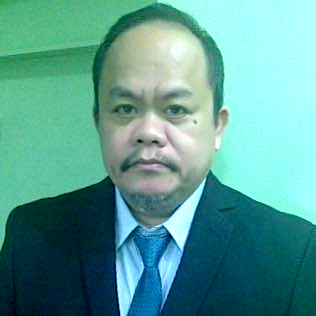
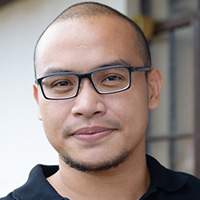 The Commission on Electons (Comelec) is a strange constitutional creature. Unlike in most jurisdictions where the sole function of election management bodies is to administer elections, Comelec was created with two clashing heads. It is not only an election administrator, it is also a quasi-court, hearing and deciding pre- and post-election cases.
The Commission on Electons (Comelec) is a strange constitutional creature. Unlike in most jurisdictions where the sole function of election management bodies is to administer elections, Comelec was created with two clashing heads. It is not only an election administrator, it is also a quasi-court, hearing and deciding pre- and post-election cases.
Under present laws, the Comelec has exclusive jurisdiction over all pre-election cases, like petitions to deny due course and disqualification complaints involving candidates of all levels. Through these two petitions, Comelec can remove any candidate and abort their electoral prospects without the benefit of a full trial or an election. This was the power it carelessly exercised in 2016 by removing then-frontrunner Grace Poe from the list of candidates for president at the height of the campaign. Only the Supreme Court’s judicious intervention stopped it. The controversy nonetheless seriously hurt Poe’s chances at the polls.
After elections, under the Article IX.C Section 2.2 of the 1987 Constitution, the poll body has jurisdiction over election protests and quo warranto cases of all elective regional officials of the Autonomous Region in Muslim Mindanao, provinces, and cities. It also has appellate jurisdiction over all contests involving elective municipal officials decided by Regional Trial Courts (RTCs), or involving elective barangay officials decided by Municipal or Metropolitan Trial Courts (MTC/MCTC). It also now has shared jurisdiction with regular prosecutory arms of government in prosecuting election cases.
Comelec’s split personality presents a lot of complications.
Conflict of interest
There's an inherent conflict of interest when it is both an election administrator and an election judge. When someone protests the results of an election, his natural position is to assail the integrity of the election, to allege fraud and all of forms of cheatings. How does he expect to be sustained by the very administrator of that election? Sustaining him would mean admitting failure on the part of the administrator.
This is made more complicated with the automation of the elections, where the most grounds for protests are intimately tied with the automated system’s software integrity, which is directly attributable to Comelec. The Comelec cannot be expected to make a decision against its interests; it is naturally positioned to defend the integrity of its own system.
In fusing election administration and adjudication in one body, there is no inherent check and balance. Thus, here, winning a protest is an uphill battle for those who question the elections.
Second, the administration of election per se is a very jealous and complicated job. It demands the agency’s undivided attention.
Our regular elections are the country’s biggest synchronized nationwide activity administered by the government. It takes massive and long-term preparation to make sure that around 55 million voters get to vote within the 10-12-hour period in the 90,000 precincts across the 7,000 islands of the country. This is the reason preparations have to start as early as two years before the scheduled election. During that period, the commission en banc would need to decide even the minutest concerns.
Around the same time when election preparations peak, specifically after the filing of certificates of candidacies, nearly 1,000 cases from across the archipelago flood the Comelec’s headquarters in Manila. Aside from the volume of complaints, there are political pressure to resolve these cases in time for the printing of ballots or election day itself.
With these two kinds of concerns to attend to at the same time, it is physically impossible for the 7-member Comelec en banc to pay these matters the attention they require. Oftentimes, the quasi-judicial work takes a back seat, as making sure that the election takes place remains the higher priority at the end of the day.
After the elections, hundreds and hundreds of election protests and quo warranto now go up to Comelec’s main office and few months after appeal from local cases from all over of the Philippines. With these compunding tasks, many of these cases remain unresolved even as the new election cycle comes in.
Strange fusion of powers
This strange fusion of powers vested in the Comelec was not original to the 1987 Constitution. This was first conceived in Marcos’ 1973 Constitution – the first time the Comelec was given the power to resolve election cases, concurrent with its duty to administer elections. It made the Comelec the “sole judge of all contests relating to the elections, returns, and qualifications of all Members of the National Assembly and elective provincial and city officials.”
This was an abandonment of the earlier provision in the 1935 Constitution that limited Comelec’s adjudicatory power to “all administrative questions affecting elections, including the determination of the number and location of polling places, and the appointment of election inspectors and of other election officials.” From a purely election-administering body in 1935, the Comelec became a quasi-court in 1973. Its powers was further broadened in the 1987 Constitution.
The draft constitution proposed by the Presidential Consultative Committee seeks to bring back the original 1935 setup, stripping Comelec some of its quasi-judicial function and putting more emphasis on its election-administering function.
It proposes the creation of a “Federal Electoral Court,” composed of a chief justice and 14 associate justices, which shall have the jurisdiction over contests relating to the elections, returns, and qualifications of the president, vice president, and members of both houses of Congress. With this major overhaul, the Presidential Election Tribunal (PET), the Senate Electoral Tribunal (SET), and the House of Representatives Electoral Tribunal (HRET) will all be collapsed, and their functions will be absorbed by the Federal Electoral Court.
The Federal Electoral Court will also have the power to review, on appeal or certiorari, all decisions, resolutions, and orders of “trial courts of proper jurisdiction in all contests relating to the elections, returns, and qualifications of other elective regional, provincial, city, municipal, and barangay officials…” This would mean the powers of the present Comelec to hear and decide questions on the elections and qualifications of local officials be transferred back to the judiciary.
It also has review powers over the decisions, resolutions, and orders of the Commission on Elections with respect to “all questions affecting elections, including the qualifications of candidates and political parties, and other pre-election controversies, and the conduct of plebiscites and referenda.”
Interestingly, it implies that the Comelec gets to retain powers to decide pre-election controversies, which is understandably administrative in character. However, the phrase “questions affecting elections, including the qualifications of candidates and political parties” needs further clarification. As of now, qualifications of candidates may only be questioned after elections, through an appropriate quo warranto proceeding, which is rather judicial in character.
The proposed appointment scheme also significantly tempers the discretion of the president to appoint the members of the election court. He can only appoint the chief justice and 4 associate justices of the Federal Electoral Court. The 5 other associate justices will have to be appointed by the Commission on Appointments, and the remaining 5 by the Federal Constitutional Court sitting en banc. Their appointments will not require confirmation, to do away with the current shameless practice of Commission on Appointments members trading favorable rulings on election cases with confirmation votes for the appointees.
The proposed constitution requires each member of the Federal Electoral Court to be an “election law expert.” This is understandable, knowing that this is a specialized adjudication, requiring very specific legal knowledge and experience.
However, counter-intuitive is raising the age of qualification to 50, from the present age of 35 required of Comelec commissioners. We must note that election litigation in the age of automated elections is significantly different than in manual elections. Proper adjudication of these cases would not only require knowledge of election law, but solid foundation in information and communication technology. To increase the age requirement would only weed out a lot of younger qualified individuals, in exchange for more senior lawyers who cannot even send an email or, worse, cannot be expected to understand the complicated ICT infrastructure of an automated election.
This proposed major restructuring of the Comelec, one of its key departments handling election contests and appeals, the Election Contest and Adjudcation (ECAD), for example, will become functus officio. At the same time, this will be a good opportunity for Comelec to pursue structural reform, particularly to expand its existing Information Technology Department (ITD), which is currently undermanned.
Overall, removing the adjudicatory functions of the Comelec would seem a step in the right direction. Most noted election lawyers, including former Comelec Chairman Sixto Brillantes Jr, have been advocating for this reform for the longest time.
However, I suggest that the Comelec be fully unburdened of adjudicatory distractions. Even the handling of pre-election cases should be taken from the poll body, since they are always filed at the height of election preparations; this function should be transferred to the Federal Electoral Court as well. This will also disabuse us of the notion that only lawyers should be appointed there. Instead, experienced project managers should be placed there – theirs is a more relevant skill when it comes to election management. – Rappler.com
Emil Marañon III is an election lawyer. He served as chief of staff of retired Comelec Chairman Sixto Brillantes Jr. He graduated from the SOAS, University of London, where he studied Human Rights, Conflict and Justice as a Chevening scholar.













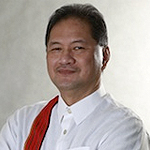



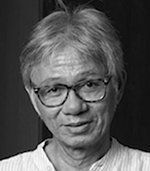

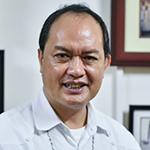

 This opinion piece is part of the Silver Lining Series written by members of the Council of Asian Liberals and Democrats (CALD), an organization of liberal and democratic parties in Asia, to celebrate its 25th Anniversary this 2018.
This opinion piece is part of the Silver Lining Series written by members of the Council of Asian Liberals and Democrats (CALD), an organization of liberal and democratic parties in Asia, to celebrate its 25th Anniversary this 2018.





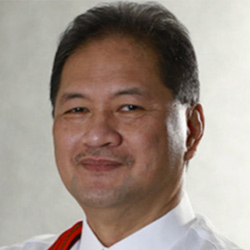





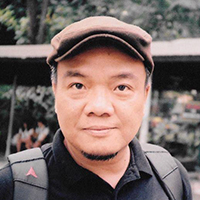 Heto na naman us. Like you know what I mean. To make habol sa about-to-conclude na national Buwan ng Wika celebs. Like most of the celebrations in schools were really lit and fab. Gosh. Kaya naging in na in na naman ang nagpilit managalog o mamilipinong variety show host o media on-air even if they are fluent naman in English talaga. Ow wait, hindi rin sila fluent in English! Or Filipino. Like. Hindi. Sila. Fluent. At. All. Tulfo twang. Lang. Pala.
Heto na naman us. Like you know what I mean. To make habol sa about-to-conclude na national Buwan ng Wika celebs. Like most of the celebrations in schools were really lit and fab. Gosh. Kaya naging in na in na naman ang nagpilit managalog o mamilipinong variety show host o media on-air even if they are fluent naman in English talaga. Ow wait, hindi rin sila fluent in English! Or Filipino. Like. Hindi. Sila. Fluent. At. All. Tulfo twang. Lang. Pala.
